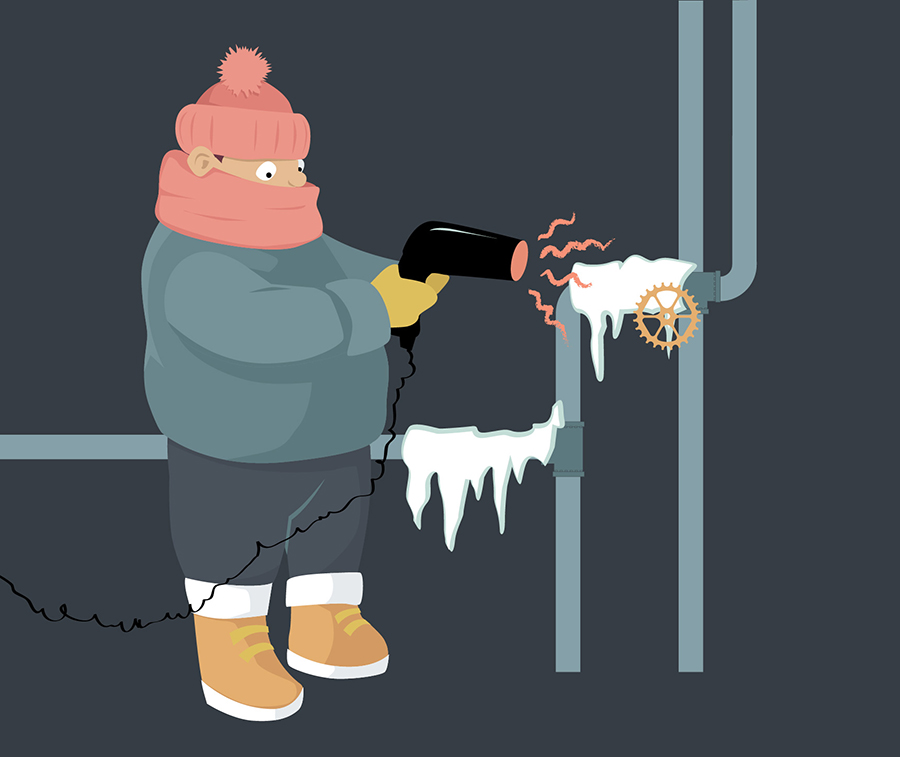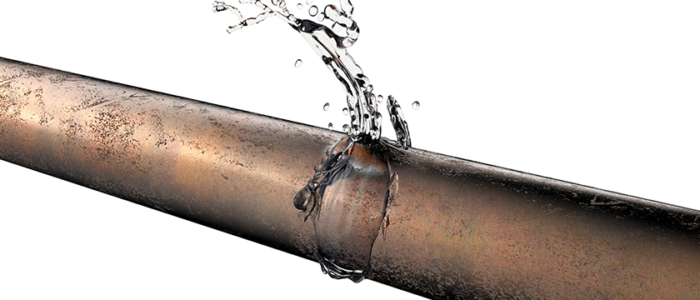Frozen Pipes – Prevention and Remedy
Frozen water pipes are the cause of a huge amount of largely preventable damage each year in our region, and according to the Insurance Institute for Business and Home Safety (IBHS) frozen pipes account for 18% of all plumbing supply system claims.
Water pipes will freeze for three central reasons:
- Quick drops in temperature
- Poor insulation
- Thermostats that are set too low
Since water has the unique property of expanding when it freezes, both plastic (PVC) and copper pipes can burst and cause flooding, structural damage and the potential for mold infestation. To put it in perspective, just a 1/8-inch crack in a pipe can release up to 250 gallons a day.
Some pipes are more prone to freezing because of their location in the home. Exposed pipes in unheated areas, pipes located in exterior walls and any exterior plumbing such as garden hose spigots, sprinkler systems or swimming pool supply lines, are at the highest risk.
Some of the steps that can be taken to prevent pipes from freezing are:
- Insulate pipes from cold moving air with snap-on foam and keep them dry.
- Install fiberglass or foam insulation in unheated areas such as attics and crawl spaces where pipes are present.
- Keep pipes warm with heat tape or thermostatically controlled heat cables.
- Let faucets drip – moving water not only helps prevent freezing, but relieves pressure.
- Open cabinet doors under sinks to allow warm air to circulate.
- Remove garden hose, shut off the water supply valve from the interior and open the faucet.
- Never turn your thermostat below 55° F (12° C) (some houses vary depending on several factors, such as piping locations and insulation values).
- Turn the water off if leaving for an extended period (Note: if you have a fire sprinkler system this may deactivate it).
- Use smart home sensing devices to monitor temperature and detect water leaks.
 In the event that preventative measures don’t work and your pipes do freeze, first of all, don’t panic. Just because the pipe is frozen doesn’t necessarily mean there is a rupture and there are ways to thaw a frozen pipe:
In the event that preventative measures don’t work and your pipes do freeze, first of all, don’t panic. Just because the pipe is frozen doesn’t necessarily mean there is a rupture and there are ways to thaw a frozen pipe:
- First, locate the water main shut-off valve and shut the water off.
- Open the faucet(s) the pipe runs to before thawing to allow the water to flow and relieve any built-up pressure.
- Apply heat to the the pipe using an electric heating pad, hair dryer, heat lamp or portable space heater – DO NOT use a blowtorch or other open flame devices. Start from the interior faucet end of the pipe, and work your way to the cooler end.
- After the pipe is thawed, turn off the faucets, etc. and turn on the main water valve. Be sure to check for breaks/leaks in the pipes throughout the house. It is also a good idea to monitor the water meter for an indication of hidden leaks.
If you have any further questions about heating a particular area, or would like a reference for an insulation contractor, please contact us.


Comments are closed.